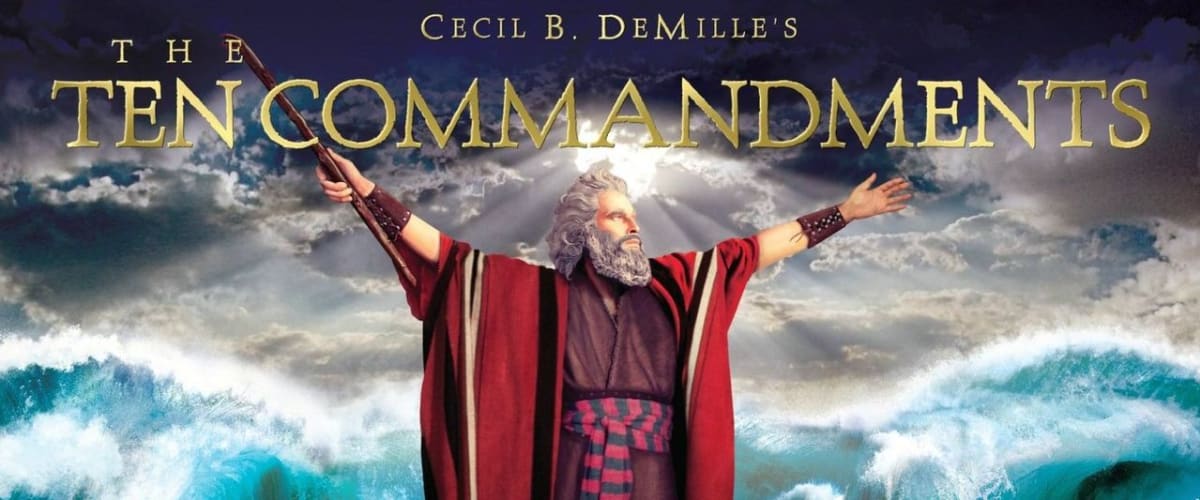
When Texas redesigned its Capitol grounds in 1993, sharply reducing the number of monuments displayed, the commandments monument remained. One of these Ten Commandments monuments was erected on the grounds of the Texas' Capitol in 1961. Over the next few years he helped pay for literally thousands of these displays.

(Jews, for example, count "I am the Lord" as the first commandment the monument treats that verse as a prologue and omits the phrase "which have brought thee out of the land of Egypt.") DeMille saw an opportunity to help promote his movie. The Eagles joined with the judge only after persuading themselves that despite having picked the Lutheran version of the commandments-which differs both in numbering and interpretation from the version of the commandments adopted by the Jewish, Catholic, and other Christian traditions-the display would be nonsectarian. Exposure to the commandments, he believed, would set such teens straight. The judge believed that the teenagers he saw in his courtroom lacked any idea of right and wrong. DeMille learned that a Minnesota juvenile judge and the Fraternal Order of Eagles had joined to erect Ten Commandments monuments in public places.
THE NEW TEN COMMANDMENTS MOVIE MOVIE
Just before the 1956 release of his remake of The Ten Commandments, fabled movie producer Cecil B. With the exception of small groups of Jewish and Christian believers, the Sabbath is no more scrupulously observed today than at any time during the past 50 years. It is doubtful that adultery is more common now than it was 20 or 40 years ago. It would be hard to say that these challenges are a result of a sudden upsurge in violations of the Ten Commandments themselves, and that the displays are being challenged as unwelcome reminders that people are sinners. The display and its removal may be serving as a springboard for Moore's political ambitions.

The most notorious new display case involved a deliberately provocative 5,000-pound granite monument placed in the Alabama Supreme Court building by former Alabama Supreme Court chief justice Roy Moore. There is also a spurt of new Ten Commandments displays, including one involving an Alabama judge who has embroidered them on his judicial robes. Many of the Ten Commandments displays are almost 50 years old, but are now challenged for the first time. Decisions will come by June 2005.Īlthough the burst of litigation is relatively new, the displays may not be. ACLU (Kentucky)-have come before the United States Supreme Court. Purely private displays are, of course, not affected by this litigation. Dozens of lawsuits have been filed over the past five years challenging Ten Commandments displays by government or by private parties given special access to government land. Ten Commandments litigation has become a growth industry for lawyers specializing in the First Amendment. and that 'he history of man is inseparable from the history of religion'" ( ibid., citations omitted).Īnyone (including this writer) who predicted that this rather commonsensical ruling would be conclusive was a false prophet.

This Court has recognized that 'religion has been closely identified with our history and government,'. Justice Rehnquist, as he then was, dissented: "The Establishment Clause does not require that the public sector be insulated from all things which may have a religious significance or origin. Rather, the first part of the Commandments concerns the religious duties of believers: worshipping the Lord God alone, avoiding idolatry, not using the Lord's name in vain, and observing the Sabbath Day" ( Stone v. The Commandments do not confine themselves to arguably secular matters, such as honoring one's parents, killing or murder, adultery, stealing, false witness, and covetousness. The Ten Commandments are undeniably a sacred text in the Jewish and Christian faiths, and no legislative recitation of a supposed secular purpose can blind us to that fact.

"The pre-eminent purpose for posting the Ten Commandments on schoolroom walls is plainly religious in nature. The Ten Commandments in the Courts Marc D.


 0 kommentar(er)
0 kommentar(er)
